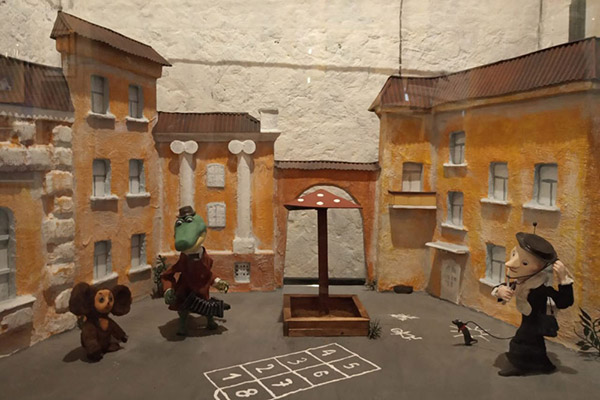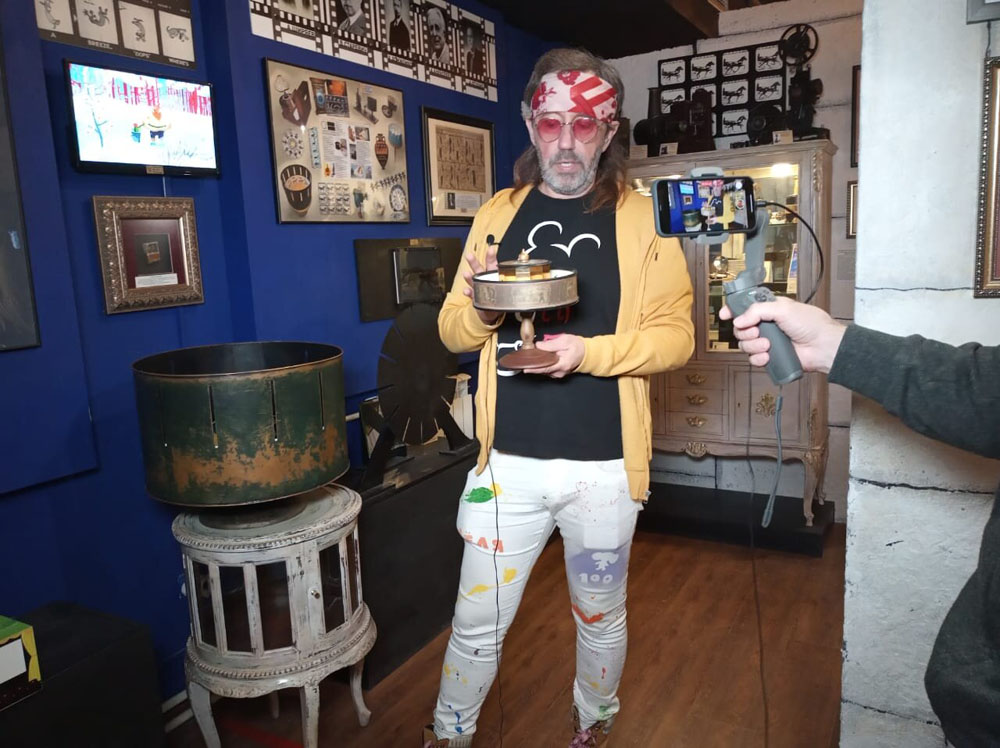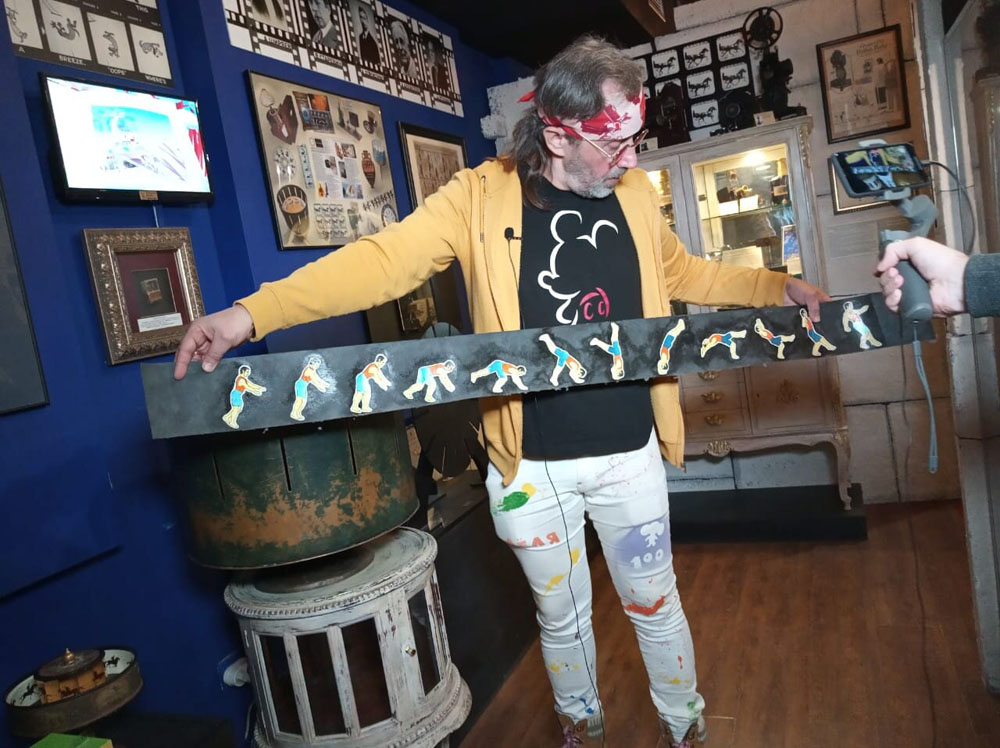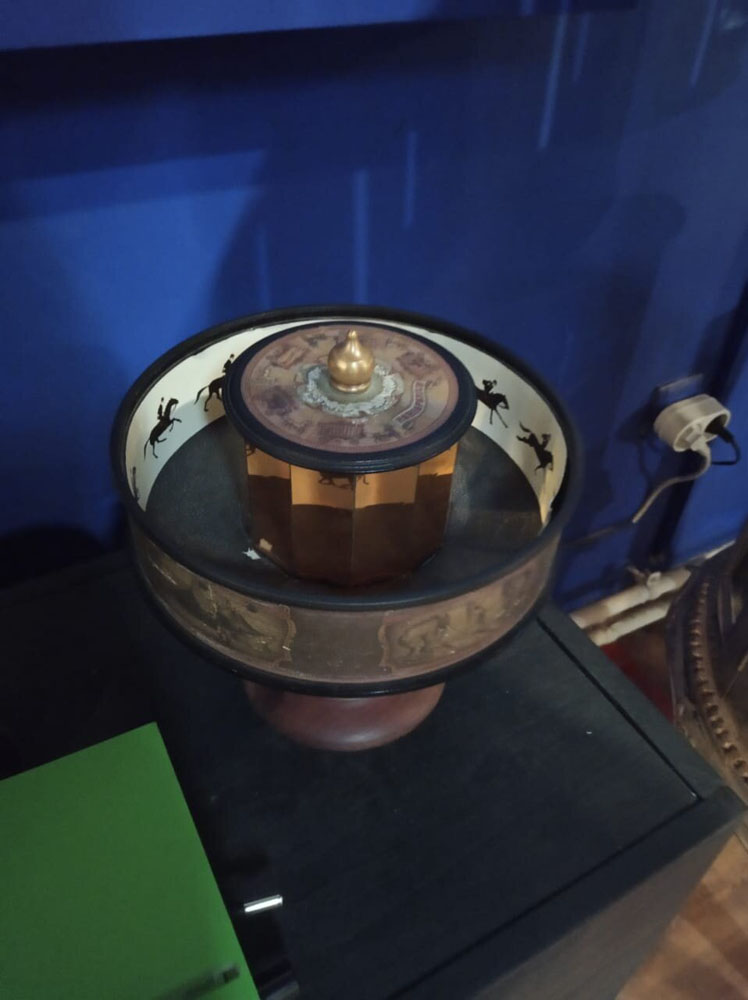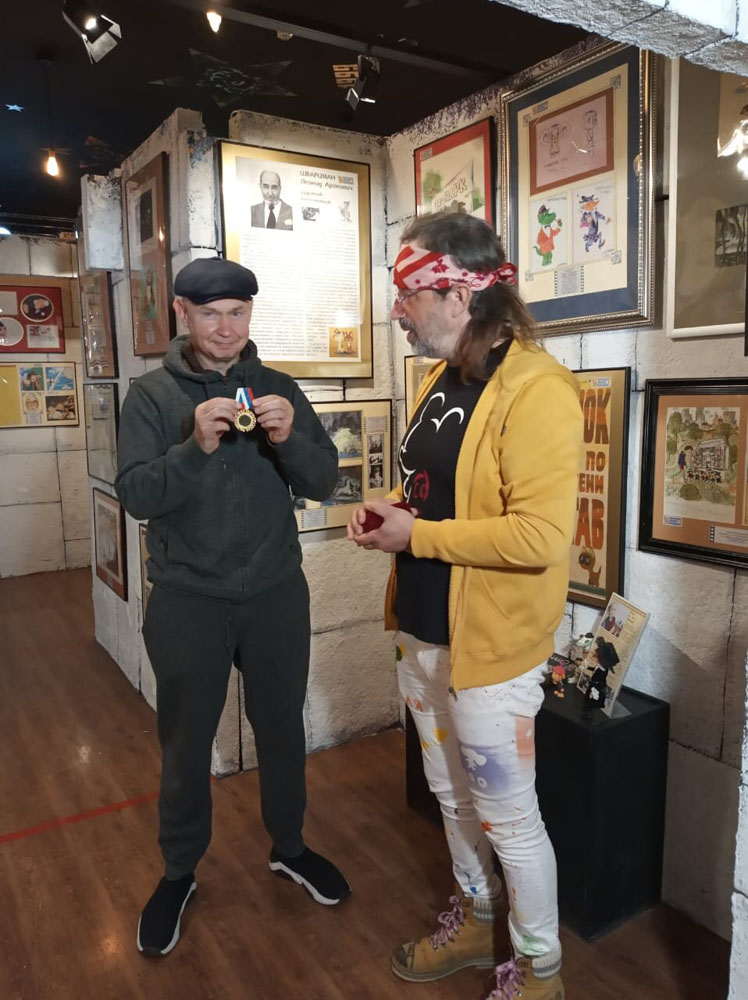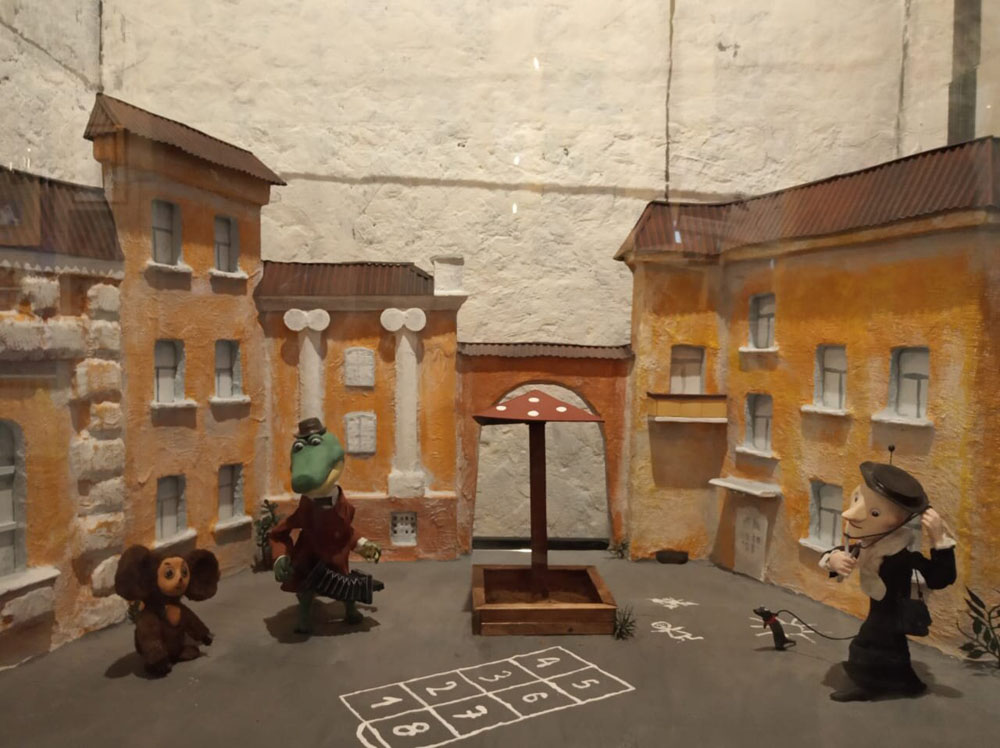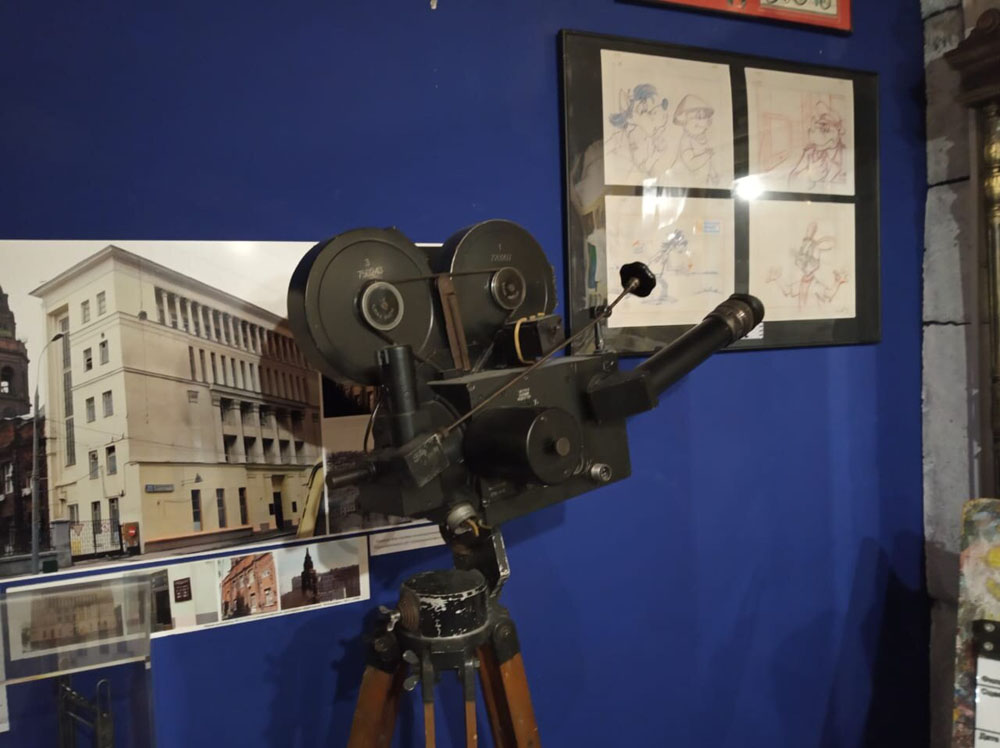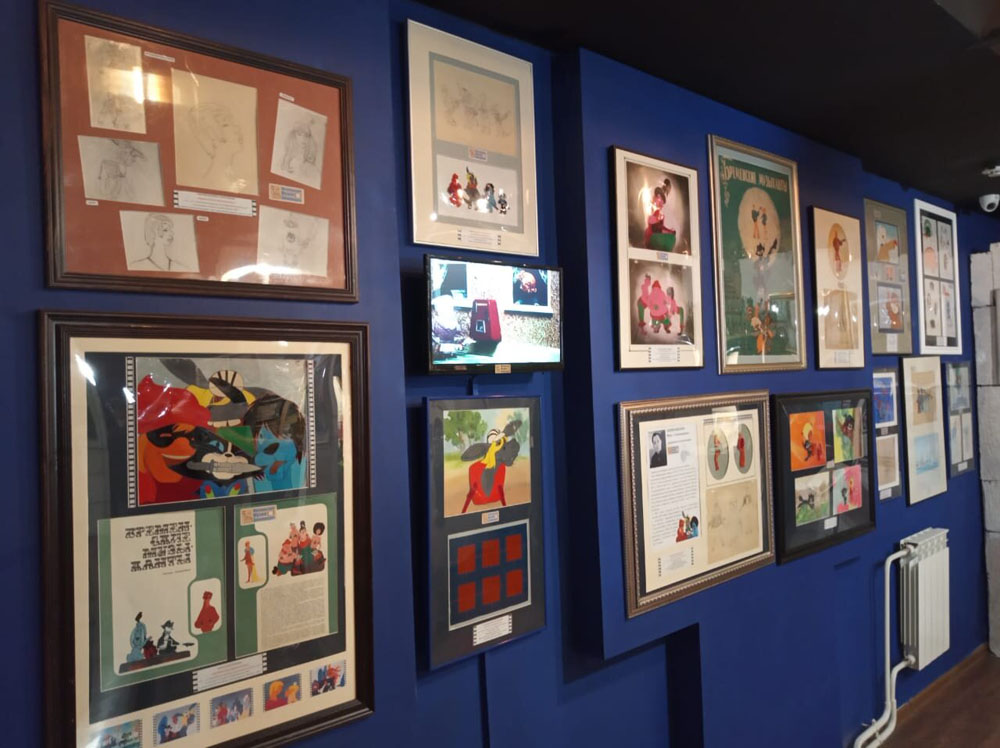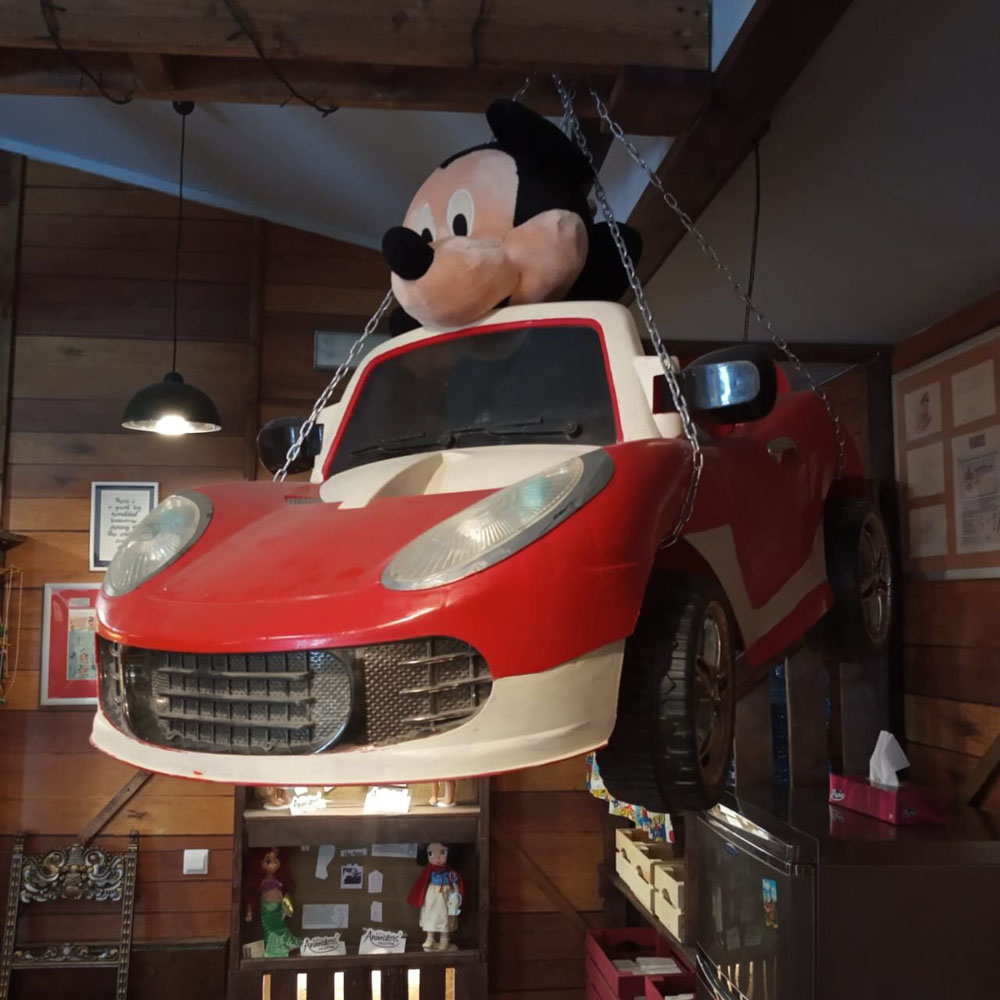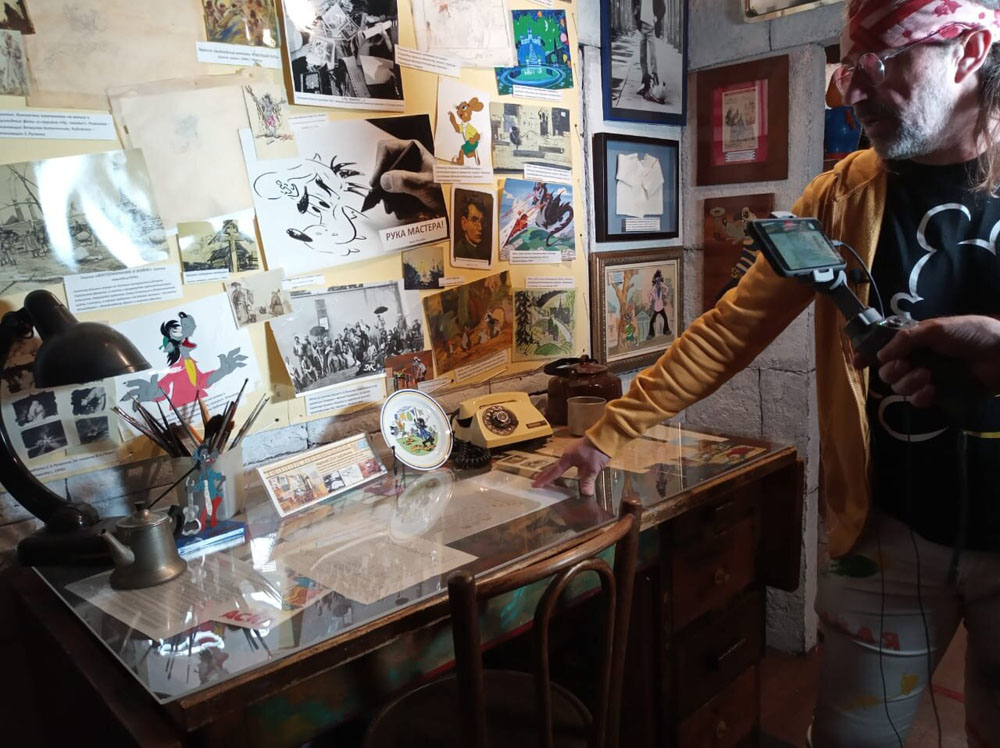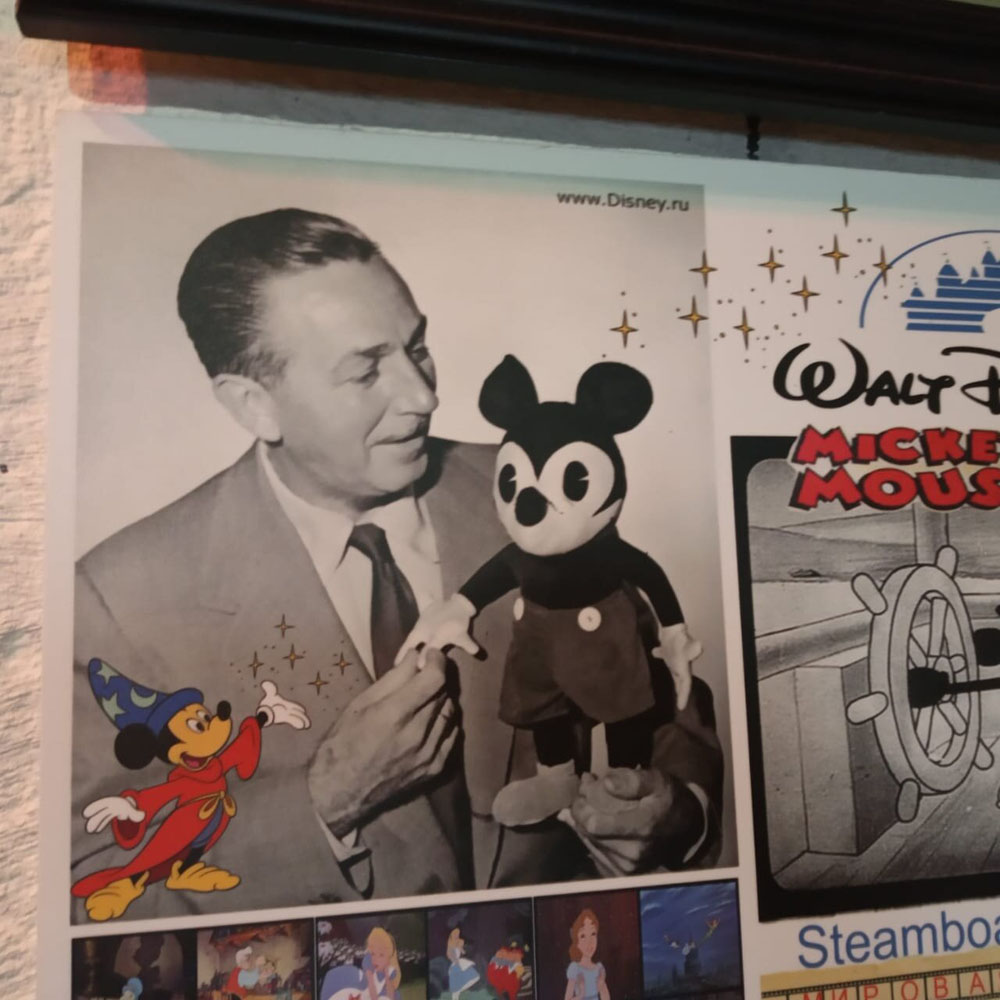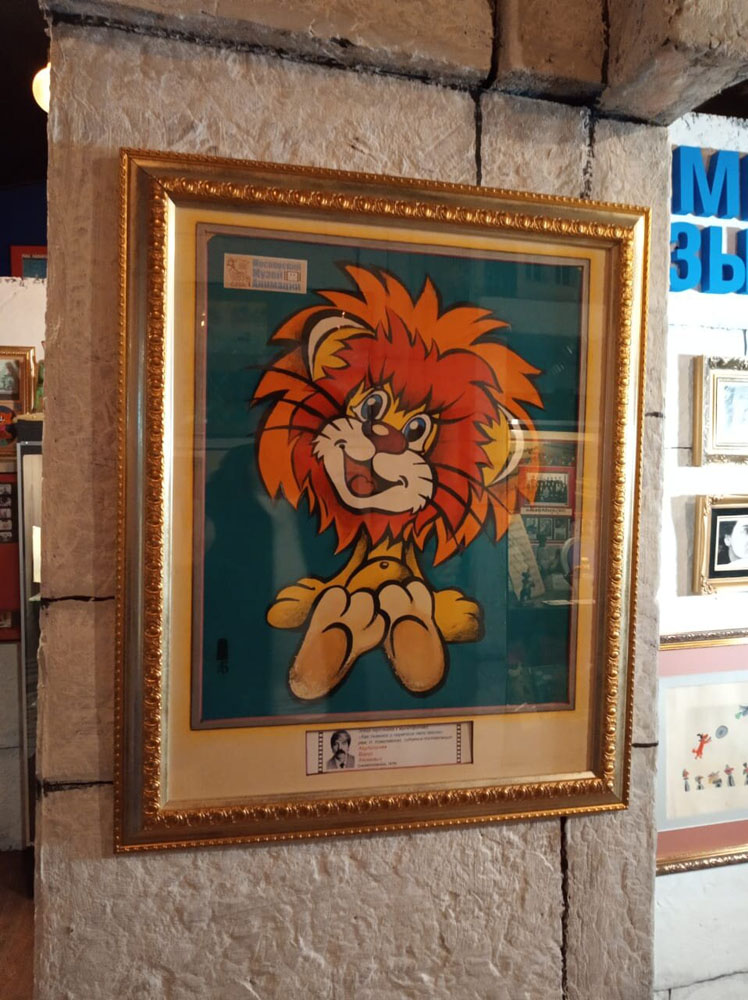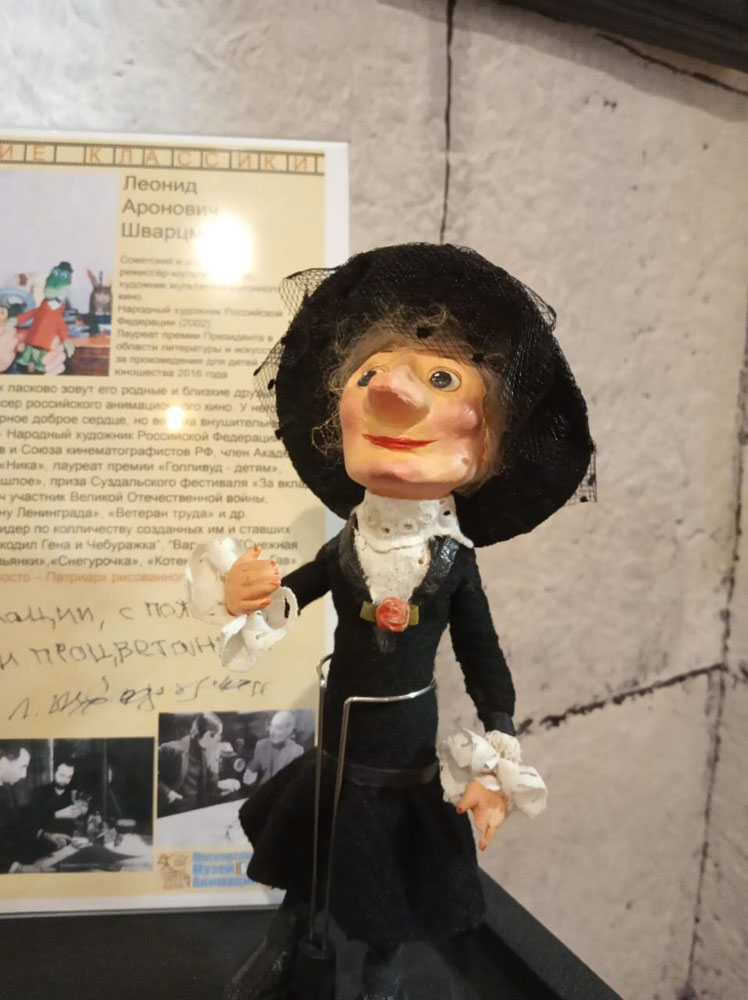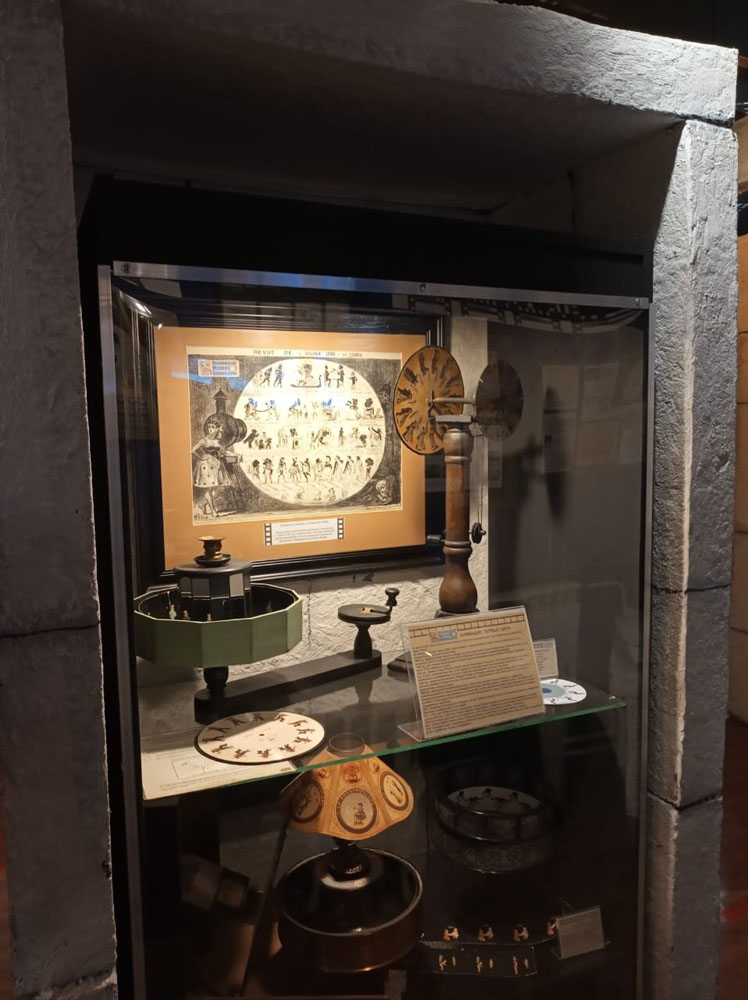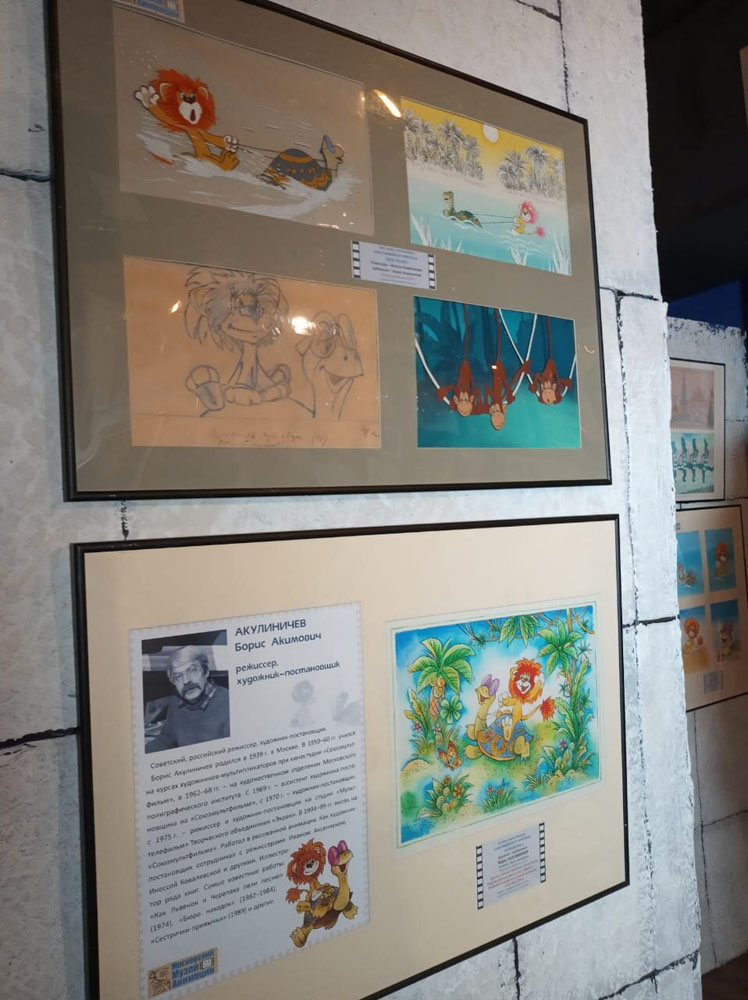Last week the team of the Association of Private Museums of Russia visited the Moscow Animation Museum. Creative Director, film director, cartoonist, and artist Kirill Polikarpov gave the colleagues a tour around the museum and showed them the process of creating animation films at Walt Disney and Soyuzmultfilm Studios. He also talked about the first inventions in the field of “animating” inanimate objects and showed an excerpt from the world’s first cartoon.
At the beginning of the meeting with Kirill Vladimirovich, Director of our Association Alexey Shaburov was awarded a medal for participation in the LELYALAND cartoon festival. The festival was held in August and marked the 100th anniversary of cartoonist Leonid Aronovich Shvartsman, a legend of the animation world.
The Moscow Animation Museum was opened in 2006 by veterans of the Soyuzmultfilm studio, it is the first international animation museum in Russia. Today it displays more than 5000 exhibits.
The tour began with the visit to an improvised ancient cave, where cave paintings of a running archer show evidence that the art of animation can be traced back for more than ten thousand years. Next, Kirill showed our team the first optical devices for viewing moving pictures. One of them is the praxinoscope by Emile Reynaud, the founding father of cinematic techniques. After the praxinoscope, Emile Reynaud invented a device for projecting cartoons onto a big screen and presented his work to the public in 1892. Its underlying principle of the background separation is still applied today, and Reynaud’s inventions were later used as prototypes for the slide projector.
The Museum also presents other devices used by animators in the past.
Furthermore, the Animation Museum preserves the history of some cartoons we all know very well, such as the sketches for the cartoons by the director Inessa Kovalevskaya, The Town Musicians of Bremen, 1969 and How the Lion Cub and the Turtle Sang a Song, 1974. By the way, according to the drawings, the Lion Cub’s mane and tail were originally pink, and the bandits from The Town Musicians of Bremen seemed to be copied from the legendary trio — the Coward, the Moron and the Veteran, played by the actors George Vitsin, Yuri Nikulin and
Eugeny Morgunov.
The 1969 cartoon Gena the Crocodile directed by Roman Kachanov is a stop-motion animation film made with puppets and not drawings. The exhibition displays a diorama with the characters from the cartoon.
One of the most precious exhibits is the legendary light table, at which the artist Svetozar Rusakov used to draw the Wolf and the Hare for the Well, Just You Wait animation film directed by Vyacheslav Kotenochkin. Other personal items of the artist are also here on display, including a pochade box, paint, an easel, and a teapot.
“People always ask: why is there a teapot? To create one second of a cartoon, you have to make 24 drawings, and for the entire cartoon, you will need more than twenty thousand drawings. The artist was so busy working he didn’t even have time for a cup of tea”, Kirill Polikarpov explained.
An interesting fact from the museum tour: it took a year for Soviet animators to make a ten-minute hand-drawn animation film. A movie camera specially adapted for frame-by-frame shooting of animation was used for the production. There is a camera like that on display in the museum. “This camera was used at the Soyuzmultfilm Studio for more than fifty years, it was created by Soviet specialists at the Moscow Film Equipment Factory. The new Soyuzmultfilm Studio is now based within the walls of this very factory. There were two types of animation cameras: one for stop-motion animation, and another one for hand drawn animation, they weighed 1.5 tons.
On a tour to the Animation Museum, one could hardly disagree with its Director who believes that Soviet cartoons taught children to be kind and to do good deeds, helped kids learn important values such as generosity, kindness, friendliness, patience, and empathy. “I was shocked to learn that in 1978 Pope John Paul II said in his sermon, if you wish to raise your kids well, show them Soviet cartoons, because these cartoons inspire kindness and humanity. I think it’s the highest praise that Soviet cartoons could possibly receive”, Kirill said.
The Animation Museum preserves the history of not only Soviet but also American cartoons. An entire room is designed as the Walt Disney garage. It was in the garage like this that the outstanding American cartoonist created his first animation films, and their characters are loved by children all over the world. The story of the Walt Disney Animation Studio’s first feature film Snow White and the Seven
Dwarfs, released in the USA in 1937, is fascinating. This film made a huge impression on audiences all over the world thanks to the artists who had drawn the faces of the characters, especially the dwarfs, with such a skill that they seemed real. “People in our country have different opinions on the work of Walt Disney. I believe, a definition for this man has yet to be invented. Walt Disney was definitely a pioneer and an explorer. His first cartoon is one of a kind. No animation film in the world has ever won an Oscar for the character, except Snow White and the Seven Dwarfs. This masterpiece won eight Oscars, one for Walt Disney, and the other seven for each of the dwarfs. American Academicians were so charmed by the characters, that they believed the dwarfs were inspired by some tiny people existing somewhere in the world. No one believed that the film was born in the cartoonist’s imagination. It is not just some mechanical tracing of movements. Through the character’s facial expressions, body language, and thoughts, we can understand it, the characters live their emotional life on the screen.
The guided tour for the Association of Private Museums of Russia took place at the Animation Museum on Tuesday, October 27. The Museum is located in the Izmailovsky Kremlin in Moscow and is featured in the Association Museum Catalogue.
